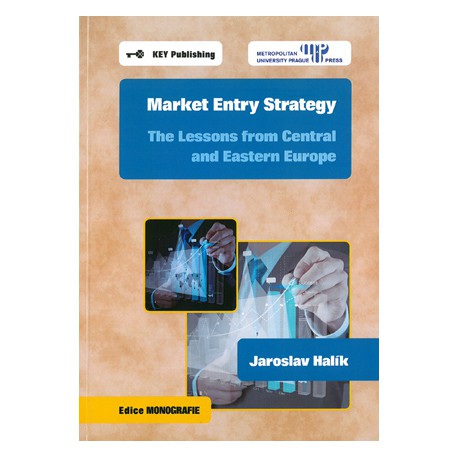No products
Data sheet
| Author | Halík, Jaroslav |
| Year of publication | 2017 |
| Publisher | Metropolitan University Prague Press, Key Publishing |
| ISBN | 978-80-87956-65-6 |
| Print run | 100 ks |
More info
The monograph Market Entry Strategy - The Lessons from Central and Eastern Europe is a reaction to the changed world's business environment in which national markets united into one global network, and companies are seeking new forms of managing processes, structures and communications.
In the first chapter, the author analyzes the process of companies' internationalization, their role in global value-adding chains, new types of supplier-distributor relations, and the ways of managing flows of goods, services and money throughout the global interaction.
The second chapter brings characteristics of the business environment in the Central and Eastern European countries, and compares doing business in the communist period and today. The author describes the competitive advantages of Central and Eastern European markets, and analyses the impact of foreign trade policies on international trade, types of duties and non-tariff barriers, international trade, commercial, and payment agreements. He also introduces the international organizations, economic integration groupings, and international agreements on raw materials, trade in services and protection of intellectual property, that play active role in international trade.
The third part gives a detailed overview of the methods and strategies of entry into international markets. It consists of three logical sections. The first describes the market entry in a production sector. The authors explain contractual assurance of investment projects, foreign industrial facilities, technical and production engineering and mining of raw materials. They also explain how to conclude contracts on international production sharing, joint venturing and direct investing. The next part focuses on foreign market entries in the area of sales and distribution. Authors describe the methods of direct exporting and importing, warehousing, setting up own subsidiaries and affiliates, creating the international holding companies, etc. In the last section, the authors write about foreign market entries in services. They describe the role of business agents, forwarding and logistics companies, financial institutions, and consulting and management service providers.
The book intends to serve as a study material for international business courses on the university level. It can also be a practical tool for companies in private sector and for public institutions active in the area of international trade and foreign economic relations.


